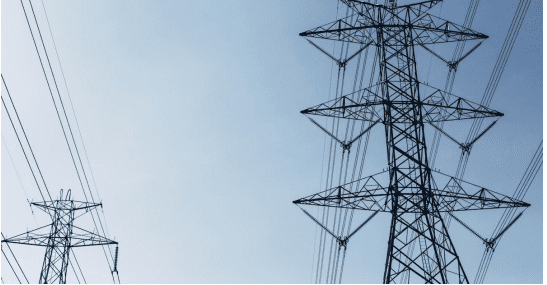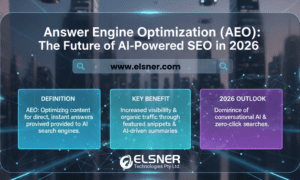When most people think of AI’s impact on the energy industry, they think of the massive power demand created by the new data centers AI companies require. It’s a legitimate concern. According to RAND, AI data centers could consume up to 327 gigawatts of electricity annually by 2030. However, fewer people consider how generative AI could reshape the energy industry itself. The technology has numerous real-world applications that could help energy companies make the grid more reliable and efficient while lowering energy costs. That’s the prevailing opinion in the AI industry and among grid operators now exploring Amazon Web Services’ AI offerings. Here’s a look at how generative AI solutions powered by Amazon AWS stand poised to revolutionize the energy industry.
Streamlining Proactive Maintenance and Outage Response
As you might imagine, delivering electricity over vast distances is a massive challenge. When you add in the vagaries of weather and the countless types of terrain and physical conditions transmission systems encompass, the challenge grows exponentially. One of the difficulties those conditions create lies in how operators respond to service degradations.
Right now, most grid operators rely on subtle shifts in current and voltage to discern damage to transmission systems. However, knowing that damage has occurred is one thing. Figuring out the scope of the damage and what it’ll take to fix is something else. For that, operators deploy a small army of maintenance workers, who go on-site to inspect issues. Then they either repair the damage themselves or call in a specialty crew. It’s a slow, labor-intensive way to deal with infrastructure issues.
AI, however, can act as a force multiplier, making it much easier to respond to equipment failures. One way it can do so is by enabling continual monitoring of IoT sensors connected to the grid. By analyzing real-time power data, an AI assistant can make proactive maintenance suggestions to the operator’s crews. In this way, grid operators can reduce outages caused by ordinary wear and tear.
Also, AI can ingest live video feeds from strategically placed cameras that monitor critical power infrastructure. That allows operators to deploy thousands of digital eyes to watch over key parts of the grid. Then, using image identification and classification algorithms, the AI system can spot infrastructure issues and tell crews exactly what type of damage they can expect upon arrival. That way, they can bring the appropriate repair tools and materials, thereby decreasing total outage times. The use case isn’t theoretical; multiple European operators are already using a similar solution from Siemens Energy for aerial transmission line inspections.
Enabling Renewables on the Grid
Another area where generative AI solutions can assist grid operators is in onboarding and managing renewable generation technologies. As it stands, grid providers struggle to accommodate rooftop solar systems and other decentralized power generation systems. The issue is that such systems provide unpredictable power flows onto the grid. That makes keeping supply matched with demand far more challenging. When operators fail in those efforts, power outages follow.
One of the key solutions that grid operators plan to lean on as more renewable generation capacity comes online is smart meters. They’re power meters that enable two-way communication with grid control centers. That way, those charged with keeping power flows stable can see, in fine detail, where current enters and exits the grid. Then, they can regulate inflows from renewables as necessary.
AI can enable continuous, automated grid management using data from those smart meters. It offers grid operators a way to utilize the flood of operational data in real time. For example, an AI-powered management system can use meter data and predictive weather modeling to determine where excess solar capacity will be available throughout each day. Then, it can redirect power flows from higher-producing areas to lower-producing ones. That can help eliminate one of the most significant current barriers to mass adoption of solar power.
Eliminating Knowledge Management Difficulties
As ever-increasing demand meets aging and often outmoded electrical infrastructure, engineers struggle to plan upgrades and improvements to meet that demand. However, the biggest problem isn’t one of resources or of grid operators’ unwillingness to invest. Instead, it’s that engineers spend unmanageable amounts of time finding engineering data to guide their efforts. If you stop to think about it, that makes sense. After all, electrical infrastructure in some places is over a century old. That leaves engineers combing through datasets kept in everything from paper archives to digital storage systems.
Naturally, generative AI is a perfect way for grid operators to solve their knowledge management issues. Using multimedia data ingestion methods, grid operators can import, categorize, and index all the data they now possess. Then, engineers could use a simple, natural-language interface to find the information they need. Not only would that streamline infrastructure projects, but it would also reduce barriers to effective knowledge transfer. That alone can minimize the impact that technical debt has on the evolution of today’s electricity grid to the smart grid of tomorrow.
Powering the Next Generation of Electrical Grid Management
The use cases discussed here are just the beginning. They merely represent what’s possible right now, using AWS’s best-in-class AI offerings. However, it’s easy to foresee an ever-growing role of AI in grid management that goes far beyond what’s possible right now. In fact, it isn’t a stretch to imagine electrical grids transitioning to automated operation, using AI as the foundation. Soon, you may well see AI systems powering generation capacity up and down with no human intervention. You may also see AI-powered automated crew dispatching to further reduce downtime related to equipment failures. The possibilities for AI integration into the energy sector are almost unlimited. In the end, the advantages AI provides for energy grid operators will far outweigh the costs of its overall power demand. That’s something to think about the next time you see a headline calling attention to the energy demand created by a massive AI datacenter opening in your area.
About the author:
Praveen Sridharamurthy is an accomplished Principal Solution Architect with over 21 years of experience in the energy sector, specializing in real-time operational data management, cloud computing, and AI integration. Based in Houston, TX, he is recognized for leading major digital transformation initiatives that modernize industrial operations and bridge legacy OT systems with advanced cloud-native platforms across mission-critical industries, including oil and gas, utilities, and chemicals.
His core specialties include architecting and deploying multi-cloud data ecosystems, integrating real-time operational data from complex industrial assets, and enabling capabilities such as predictive maintenance, asset health monitoring, and AI-driven operational optimization. Praveen is known for translating complex industrial data challenges into scalable cloud and AI solutions that enhance efficiency, reliability, and strategic decision-making across the energy value chain.






































